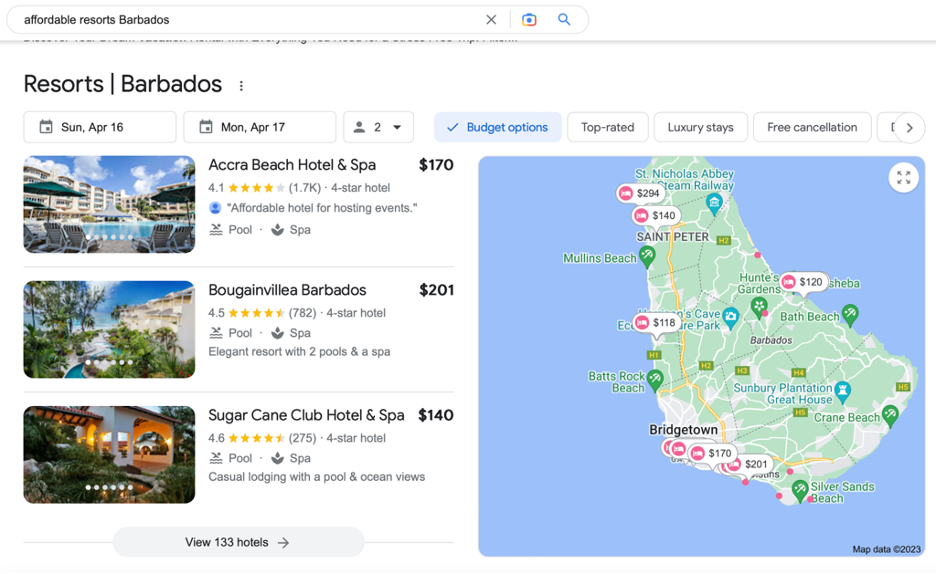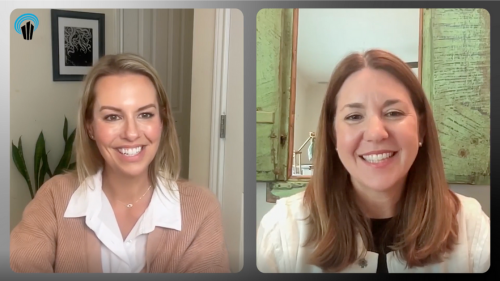Why Your Google Business Profile Views Have Dropped
Reputation Staff Writer

It’s not you. It’s Google. Recently, you might have noticed a decline in views of your Google Business Profile (GBP) listings. While these drops are significant, rest assured that you have done nothing wrong. Your GBP view data accuracy is actually improving due to a change in the way Google counts GBP views. In this post, I answer questions that you might have if you manage GBP listings. Meanwhile, Reputation has already taken steps to make sure that our clients transition to the new way Google is tracking GBP views.
What Exactly Are GBP Views?
GBP views – also known as impressions – are the number of times users view your GBP listing. Views are an important measure of your GBP listing’s visibility on Google. A GBP listing is an important ranking signal in local search. So, businesses (including Reputation) pay very close attention to views as a metric.
What Did Google Change about GBP Views?
In February 2023, Google changed the way GBP views are counted. Here’s the scoop:
- Old way: Multiple views of the same listing by the same user were all counted as unique views.
- New way: Multiple views of the same listing by the same user within a 24-hour period are only counted as one, single, unique view. It doesn’t matter if someone sees your GBP once or 20 times in 24 hours — it is still only counted once. The total number of unique views is equal to the number of people who saw your profile that day.
As a result, only a percentage of views are actually being reported compared to previous reports.
What Does This Change to GBP Views Mean, and Why Is This Change Good?
Let’s walk through an example of how views are changing:
- Let’s say a user is searching for a resort in Barbados.
- The user searches for “hotels Barbados.” This produces a list of search results, each consisting of Google Business Profile listings, with the first three results shown below:

- Notice that the third search result on the list is the Google Business Profile listing for Bougainvillea Barbados. The user clicks on this listing to learn more about the Bougainvillea Barbados – rates, availability, etc.
- After browsing the listing for the Bougainvillea Barbados, the user decides to browse through the list of other search results.
- The user then decides to do a new search using the modified search term – let’s say, “affordable resorts Barbados.”
- To do that new search, the user scrolls back up the list of the original search results, which means that the user necessarily scrolls past the original Bougainvillea Barbados listing along with all the others.
- At the top of the original list of results, the user enters “affordable resorts Barbados.”
- Voila: a new term produces a new list, with the first three results shown below:

- Notice that Bougainvillea Barbados is second in the results. But the user has already viewed the details for Bougainvillea Barbados, so, the user scrolls past Bougainvillea Barbados in order to review the other options.
In the above example:
- Old way: the user’s search experience – doing two different searches that produced two different results – would have counted as three unique views for Bougainvillea Barbados: the first view being for the time the user clicked on Bougainvillea Barbados and explored its GBP listing; and then the second and third views resulting from the user passing by Bougainvillea Barbados twice when the user was scrolling up and down the list of results. Yes, simply scrolling past a listing counts as a view.
- New way: the Bougainvillea Barbados is credited with only one view.
Getting only one view is clearly a more accurate reflection of user search behavior, as the user only interacted purposefully with the Bougainvillea Barbados once in the above example. This update to the reporting shows a clearer user intent story and is a reflection of a business’ real audience.
The benefit: you get a more accurate understanding of views that matter – views that could lead to an action, such as a click to call a business, visit a website, or get directions to a business. Put another way: Google is now focusing only on quality views.
What You Should Do
Going forward, it will be important to break up your reporting: views/impressions prior to February 2023 and views/impressions post-February 2023. At Reputation, we are already doing this for our clients. We have you covered!
Other Google API Reporting Changes
You may have noticed additional changes to some of the GBP reporting in Google and Reputation. In addition to the change in views, Google deprecated a number of insights in February 2023. As a result, some of our insights in Reputation have not been updated to gather new data after February 2023:
- Category, Brand, Direct Queries, and Search Impressions
- Ability to view views by branded and unbranded searches:
- Branded: Target
- Direct: Target Nashville
- Category/Discovery: Department Store
- Ability to view views by branded and unbranded searches:
- Top Localities for Driving Requests (Google)
- Time of Day When People Call You (Google)
- Google Media Uploads and Views
- Google Post Impressions and CTA Clicks
These deprecated insight widgets will be removed and replaced, so we recommend downloading historical data for the affected widgets. Read more about Google’s deprecation schedule and details here.
Contact Reputation
To get found and chosen on Google, contact Reputation. As part of our comprehensive reputation management services, we maximize our clients’ visibility across the Google ecosystem.










